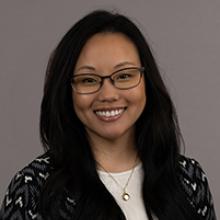Working to Make Diverse Perspectives in Research, Policy, and Technical Assistance the Norm
At a recent event hosted by the AIR Equity Initiative, a panel of experts discussed different strategies for systematically and meaningfully engaging diverse voices and perspectives in research, technical assistance, and policy development and implementation to address long-standing social inequities. This included examining internal structures and practices, partnering with a variety of stakeholders, and reimagining grantmaking processes. Each panelist’s experiences offered important takeaways for individuals and organizations who want to help ensure that diverse perspectives are regularly sought and included.
Center the Voices of Constituents
Stephanie McGencey, executive director of the American Youth Policy Forum (AYPF), and her colleagues are committed to centering the voices of those they represent: youth who have been impacted by systemic inequities. “These young people—who have experienced the juvenile justice system, the foster care system, homelessness, and other challenges, firsthand—are better equipped to identify and describe the gaps in those systems than our staff,” she explained.
Recruiting from across its network of youth-serving organizations, AYPF established a panel of youth policy consultants. It also worked intentionally to create safe and supportive environments where these young people could share their deeply personal stories. Centering and amplifying youth voices serves many functions: it helps shape the direction that policy, practice, and research can take by demystifying how these systems work; it addresses gaps in services that are designed to support and serve but fall short; and it elevates our discourse and line of sight into better solutions.
Listening Must Go Both Ways
Learn more about the AIR Equity Initiative and listen to our inaugural Building Bridges to Equity event.
Penn State University’s Evidence-to-Impact Collaborative (EIC) is a research center and information hub for the science of using social science. By improving the use of research evidence in decision making, it strives to bridge the gap between the scientific and policy communities. Because neither of these communities are monoliths—scientists and policymakers often disagree amongst themselves—Max Crowley, the EIC’s director, and his colleagues sought a communication model that would recognize these nuances and variations in opinion.
The model has three primary objectives: identifying legislative priorities where evidence-based strategies can be leveraged; coalescing a rapid response network of experts on those priorities; and supporting legislative offices. Leveraging the unique advantages of its academic setting, the EIC went about rigorously examining its own processes and outcomes.
Randomized controlled trials on their collaboration model showed that not only did legislation appear to be more inclusive of research evidence, but the policymakers were also lifting the voices of new scientists. In addition, scientists were motivated to engage with policymakers and their engagement behavior increased. In other words, because they were communicating in both directions, both communities were having a positive impact on the other.
When Disproportionality Exists, Investigate Thoroughly
In 2011, the National Institutes of Health (NIH) reported that its grant dispersals varied significantly by race, with Black scientists getting funded at 55% the rate of white scientists. Richard Nakamura, director for the NIH Center of Scientific Review at the time, was determined to uncover the reasons for these disparities. He and his colleagues hypothesized that racial bias might be a contributing source, but as they analyzed hundreds of grant applications and processes, the evidence didn’t fully bear that theory out.
Instead, they found that while white scientists’ review scores declined slightly when reviewers were blind to applicant identity, Black scores remained unchanged, and the change in white applicants’ scores did not fully account for gaps. Further, Black scientists were applying disproportionately to institutions with lower funding rates, and in general, white scientists had higher citation publication metrics.
This suggested that, rather than straightforward bias on the part of the NIH evaluators, existing structural inequities in the sciences were perpetuating themselves in the grant award process. Nakamura, now retired, and his colleagues also knew that the solution needed to be as complex and multifaceted as the problem itself.
Equity Processes Must be Systematic, Flexible, and Measurable
Karen Francis, AIR’s Chief Diversity, Equity and Inclusion (DEI) Officer, shared how AIR has been working to embed DEI across the organization for over a decade. She made it clear that though DEI may be her area of focus, every staff member at AIR has a role and responsibility to advance DEI throughout the institution.
Using a comprehensive DEI framework and strategy, AIR has implemented numerous institution-wide approaches to ensure that the principles of DEI and cultural competence are embedded into the research that it conducts and technical assistance that it provides. The approach includes the Culturally and Linguistically Appropriate Standards for Projects, Research, and Operations (CLAS PRO), a set of expectations and guidelines for ensuring that diverse and culturally competent perspectives inform AIR’s work. It also includes an Equity Review process, which is designed to embed DEI and cultural and linguistic competence across all organization-wide processes. Implementing these, and other strategies, requires constant communication, training, and feedback.
Over the years, AIR has solicited input from diverse stakeholders across the institution, and engages in measuring and benchmarking progress with DEI. AIR continues to make strategic adjustments to meet the emerging needs of the global clients and communities that it serves.
Moving Forward
In sum, to routinely include diverse perspectives requires a recognition that research, policy, and technical assistance unfold within a broader context, and consideration of related efforts across an ecosystem may be reinforcing, perhaps even catalytic. Further, benefitting from diverse perspectives requires intention, care, and resources.
